Do you have a question about the Gilera Stalker 50 and is the answer not in the manual?
Overview of the instrument panel and its indicators.
Instructions for setting and managing the digital clock.
Explanation of the ignition switch positions and key extraction.
Procedure for locking the steering wheel for security.
Operation of the turn signal indicators and lever.
Location and function of the horn button.
Operation of the headlight switch for beam selection.
How to use the starter button to start the engine.
Steps to open the vehicle's saddle compartment.
Information about the vehicle's keys and their identification code.
Location and importance of vehicle identification numbers.
Pre-ride checks for safe operation and vehicle condition.
Procedures for filling the fuel tank and oil mixer reservoir.
Correct tyre pressure specifications and importance of checking.
Guidelines for the initial break-in period of the vehicle.
Step-by-step guide to starting the engine correctly.
Solutions for common engine starting problems.
How to properly stop the engine.
Warnings and precautions regarding the catalytic converter.
Explanation of the automatic transmission system and clutch use.
Essential tips for safe driving practices and handling.
How to check the oil level in the rear hub.
Periodic checks for tyre pressure, wear, and replacement.
Procedure for removing and refitting the spark plug.
Steps to remove, clean, and refit the air filter element.
Instructions for maintaining the secondary air system.
Procedure for cleaning and refitting the intake plug sponge.
How to check and top up the brake fluid level.
Accessing and maintaining the vehicle's battery.
Recommendations for battery care during extended non-use.
Location and replacement procedure for the fuse.
How to access and replace the headlight bulb.
Procedure for adjusting the headlight beam.
How to replace the front direction indicator bulbs.
Accessing and replacing bulbs in the rear optical unit.
How to adjust the rear-view mirrors.
Procedure for adjusting the engine's idle speed.
Information on brake pad wear and checking.
Adjustment of the rear drum brake control.
Advice on dealing with tubeless tyre punctures.
Recommendations for general vehicle care and storage.
Proper methods for washing and cleaning the vehicle.
Engine specifications including bore, stroke, capacity, and compression.
Vehicle dimensions such as height, width, length, and wheelbase.
Type and characteristics of the exhaust muffler.
Description of the electronic ignition system components.
Engine lubrication method and oil type.
Description of the vehicle's cooling system.
Details of the automatic transmission system components.
Specifications for the front brake system.
Specifications for the rear brake system.
Information about the wheel rims.
Specification for the front tyre size.
Specification for the rear tyre size.
Description of the front suspension system.
Description of the rear suspension system.
Material and construction of the vehicle chassis.
The kerb weight of the vehicle.
Maximum permissible load for the vehicle.
Fuel tank capacity and reserve.
Capacity of the oil mixer reservoir.
Quantity of oil for the rear hub.
Recommendations and warnings regarding spare parts and accessories.
Table outlining periodic maintenance schedule and operations.
Overview of the instrument panel and its indicators.
Instructions for setting and managing the digital clock.
Explanation of the ignition switch positions and key extraction.
Procedure for locking the steering wheel for security.
Operation of the turn signal indicators and lever.
Location and function of the horn button.
Operation of the headlight switch for beam selection.
How to use the starter button to start the engine.
Steps to open the vehicle's saddle compartment.
Information about the vehicle's keys and their identification code.
Location and importance of vehicle identification numbers.
Pre-ride checks for safe operation and vehicle condition.
Procedures for filling the fuel tank and oil mixer reservoir.
Correct tyre pressure specifications and importance of checking.
Guidelines for the initial break-in period of the vehicle.
Step-by-step guide to starting the engine correctly.
Solutions for common engine starting problems.
How to properly stop the engine.
Warnings and precautions regarding the catalytic converter.
Explanation of the automatic transmission system and clutch use.
Essential tips for safe driving practices and handling.
How to check the oil level in the rear hub.
Periodic checks for tyre pressure, wear, and replacement.
Procedure for removing and refitting the spark plug.
Steps to remove, clean, and refit the air filter element.
Instructions for maintaining the secondary air system.
Procedure for cleaning and refitting the intake plug sponge.
How to check and top up the brake fluid level.
Accessing and maintaining the vehicle's battery.
Recommendations for battery care during extended non-use.
Location and replacement procedure for the fuse.
How to access and replace the headlight bulb.
Procedure for adjusting the headlight beam.
How to replace the front direction indicator bulbs.
Accessing and replacing bulbs in the rear optical unit.
How to adjust the rear-view mirrors.
Procedure for adjusting the engine's idle speed.
Information on brake pad wear and checking.
Adjustment of the rear drum brake control.
Advice on dealing with tubeless tyre punctures.
Recommendations for general vehicle care and storage.
Proper methods for washing and cleaning the vehicle.
Engine specifications including bore, stroke, capacity, and compression.
Vehicle dimensions such as height, width, length, and wheelbase.
Type and characteristics of the exhaust muffler.
Description of the electronic ignition system components.
Engine lubrication method and oil type.
Description of the vehicle's cooling system.
Details of the automatic transmission system components.
Specifications for the front brake system.
Specifications for the rear brake system.
Information about the wheel rims.
Specification for the front tyre size.
Specification for the rear tyre size.
Description of the front suspension system.
Description of the rear suspension system.
Material and construction of the vehicle chassis.
The kerb weight of the vehicle.
Maximum permissible load for the vehicle.
Fuel tank capacity and reserve.
Capacity of the oil mixer reservoir.
Quantity of oil for the rear hub.
Recommendations and warnings regarding spare parts and accessories.
Table outlining periodic maintenance schedule and operations.
| Engine Type | Single-cylinder, 2-stroke |
|---|---|
| Cooling System | Air-cooled |
| Fuel System | Carburetor |
| Front Suspension | Telescopic fork |
| Rear Suspension | Single shock absorber |
| Front Brake | Disc |
| Rear Brake | Drum |
| Fuel Capacity | 6.5 liters |
| Ignition | CDI |
| Front Brake Size | 190 mm |
| Rear Brake Size | 110 mm |
| Front Tire | 120/70-12 |
| Rear Tire | 130/70-12 |
| Transmission | Automatic |
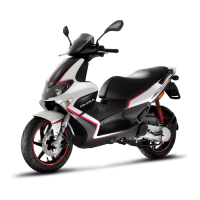
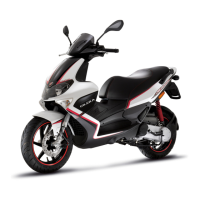
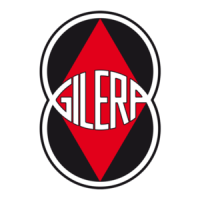
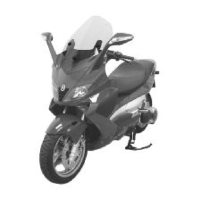
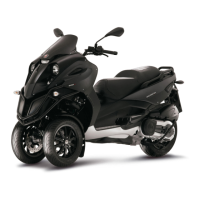
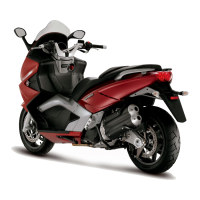
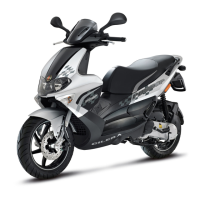
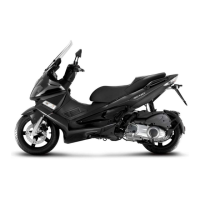
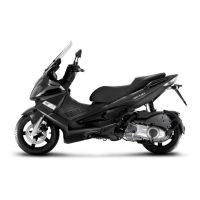
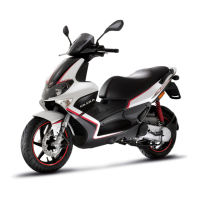
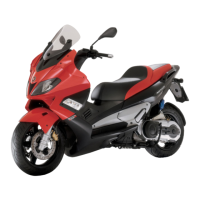
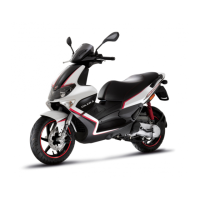
